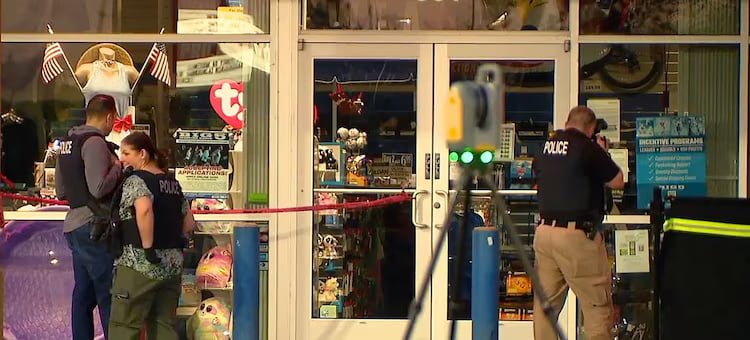A tragic incident unfolded when a teenage boy was fatally shot while attempting to return an airsoft rifle. This heartbreaking event has caused a revolution in discussions about gun safety, police protocols, and the potential consequences of misunderstandings involving toy weapons. The loss of a young life has shaken the community and raised important questions about how to prevent similar tragedies in the future.
The circumstances surrounding this incident have sparked debates on various fronts. From examining law enforcement training to analyzing public perceptions of replica firearms, this case has brought several critical issues to the forefront. As we delve into the details of what happened, we’ll explore the legal and ethical implications, the community’s response, and the growing awareness about gun safety that has emerged in the wake of this devastating event.
The Incident: A Misunderstanding Turns Fatal
Details of the shooting
On June 5, a tragic incident unfolded in a Seattle suburb when Aaron Brown Myers, 51, confronted three teenage boys outside a Big 5 sporting goods store. Myers, claiming he suspected an armed robbery, approached the teens with his gun drawn. Surveillance footage contradicted Myers’ account of the events, showing the teens complying and one setting an airsoft pistol on the ground. Despite this, Myers escalated the situation, pushing one boy down and straddling him while pointing his gun at another.
The victim: Hazrat Ali Rohani
Hazrat Ali Rohani, a 17-year-old Kent-Meridian High School student, was fatally shot during the confrontation. As Rohani turned away, briefly lowering one of his raised arms, Myers fired seven times, hitting Rohani once in the side and at least six times in the back. Tragically, one of Rohani’s friends reported that he called out for his mother before dying. Rohani, the eldest of six children from an Afghan immigrant family, was at the store to return a malfunctioning airsoft gun.
The shooter: Aaron Myers
Myers, a professional security consultant, claimed he acted in self-defense and had a duty to intervene. However, prosecutors argue that Myers attacked the teens and “at every stage of interaction chose to escalate with more and more violence”. Myers has been charged with second-degree murder and second-degree assault, to which he pleaded not guilty. The incident has raised questions about racial profiling and vigilantism, with community leaders calling for a thorough investigation.
Legal and Ethical Implications
Arrest and charges against Myers
Aaron Brown Myers, 51, faces second-degree murder and second-degree assault charges for the fatal shooting of a 17-year-old at a Big 5 Sporting Goods parking lot. He remains in jail on $2 million bail. Prosecutors argue that Myers, who is not a law enforcement officer, attacked the teens and “at every stage of interaction chose to escalate with more and more violence”.
Self-defense laws and their interpretation
Self-defense claims require legitimate and immediate fear for one’s life. In this case, Myers’ actions may not meet this criteria, as the teens were complying and had set the airsoft gun on the ground. Studies show that firearms are used more often to frighten and intimidate than for self-defense.
Training and jurisdiction of security personnel
Myers, a professional security consultant, claimed he had a “duty to intervene” . However, prosecutors emphasize that he is not trained in crime prevention. Law enforcement agencies should ensure proper screening, training, and periodic review of officers’ fitness to perform their duties.
Community Response and Gun Safety Awareness

KOMO
Local reactions to the incident
The tragic shooting has caused a revolution in community discussions. Residents expressed concern for safety and relief that the situation was not as severe as initially feared. Shawn Begg, an Ausable resident, emphasized the importance of protecting everyone in the community and immediately reached out to friends living near the incident.
Discussions on gun safety and replica weapons
The incident has sparked debates on gun safety and replica weapons. BB guns and airsoft guns, while not typically lethal, can cause serious injuries, especially to eyes . There have been no recorded deaths directly from airsoft guns, but incidents of mistaking them for real firearms have led to fatal consequences.
Calls for improved training and regulations
Experts stress the need for improved police training in threat assessment and decision-making under stress . Studies show that stress negatively affects police officers’ performance in firearm-related situations . Calls for evidence-based gun policies have emerged, with experts emphasizing the importance of understanding the effects of different laws on various outcomes .
Conclusion
The tragic shooting of Hazrat Ali Rohani has sparked intense debates on gun safety, police protocols, and the potential dangers of replica weapons. This incident has brought to light the need for better training in threat assessment and decision-making under stress, especially for those who carry firearms. It has also highlighted the importance of clear guidelines for intervention by non-law enforcement individuals, as well as the potential consequences of misunderstandings involving toy weapons.
Moving forward, this heartbreaking event serves as a stark reminder of the need to reassess current policies and practices regarding firearms and public safety. The community’s response and the ongoing legal proceedings underscore the significance of this incident in shaping future discussions on gun control, racial profiling, and the responsible use of replica weapons. Ultimately, the loss of a young life calls for a thoughtful examination of how society can prevent such tragedies and ensure the safety of all its members.










Discussion about this post